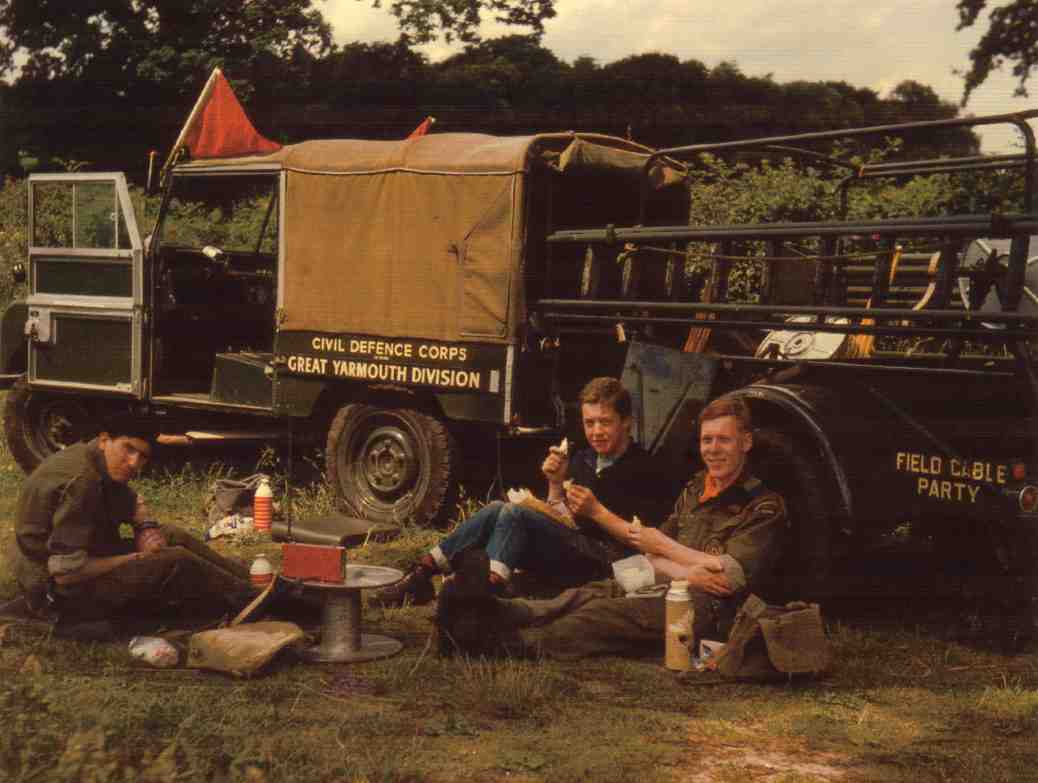
SXF 602 on an exercise (Michael Mason's twin brother is on the right)
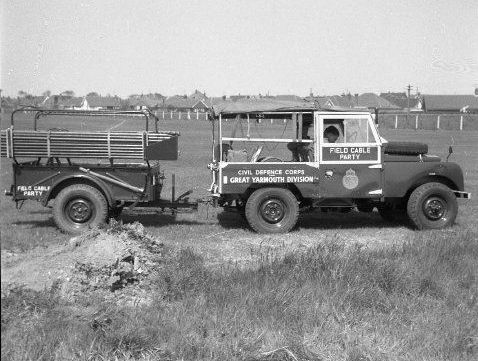
SXF 602 with Field Cable Party trailer
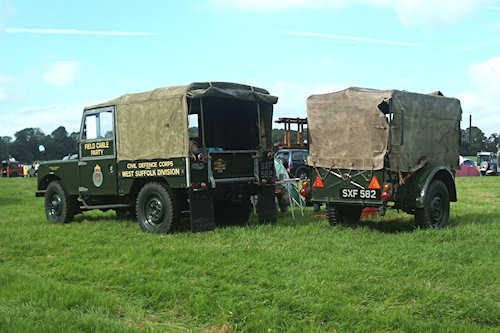
SXF 582 at the LRSOC 60th Anniversary Rally, Chepstow
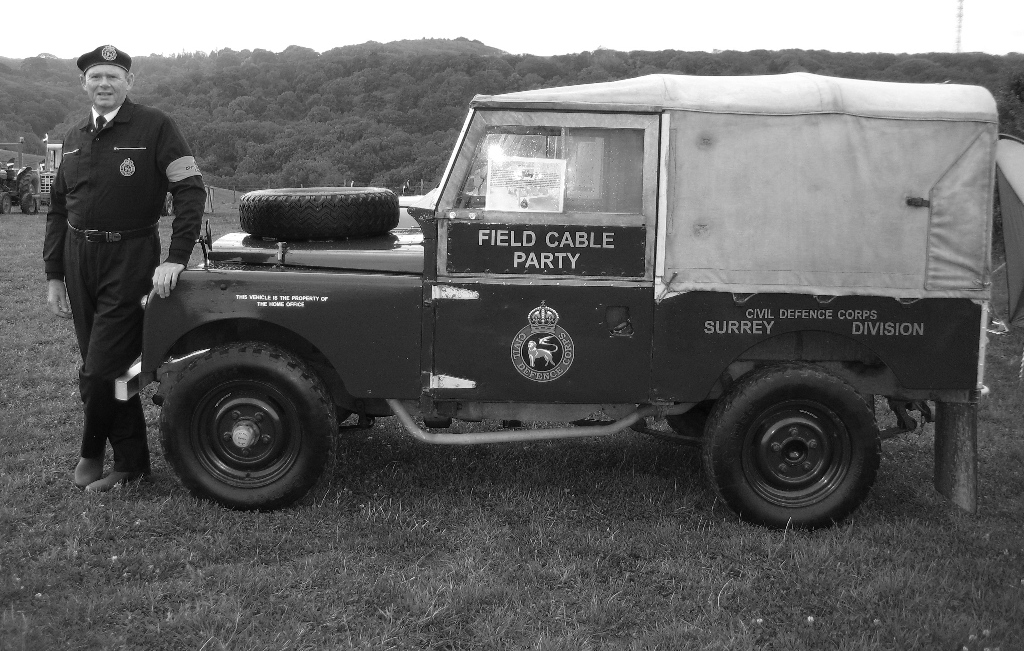
SXF 729 at a Civil Defence event in St.Mawgan
I'm often asked for advice on how to recreate Civil Defence livery. I wish I could give a helpful answer, but I'm afraid that bodywork restoration and painting is a bit of a black art to me. But the following may be of some help:
The first pic was supplied to me by Michael Mason, who has a lot of first-hand knowledge about Civil Defence livery as applied to Series 1 Land-Rovers. Note the 'station' board fixed across the upper section of the
rear wheel arch, held by a turnbuckle at the forward end and a bracket at the other — it's the presence of pairs of vertical holes at this point in the rear body tub that confirms whether the vehicle was a soft-top
when in service. Hard-top vehicles (such as Reconnaisance — see below) had the board mounted above the waistline, with corresponding holes
in the upper sides.
 SXF 602 on an exercise (Michael Mason's twin brother is on the right) |
 SXF 602 with Field Cable Party trailer |
|
SXF 582 at the LRSOC 60th Anniversary Rally, Chepstow |
SXF 729 at a Civil Defence event in St.Mawgan |
Supplied by Anthony Groves, this photo of SXF 749 (right) when in service as a Reconnaisance vehicle in |
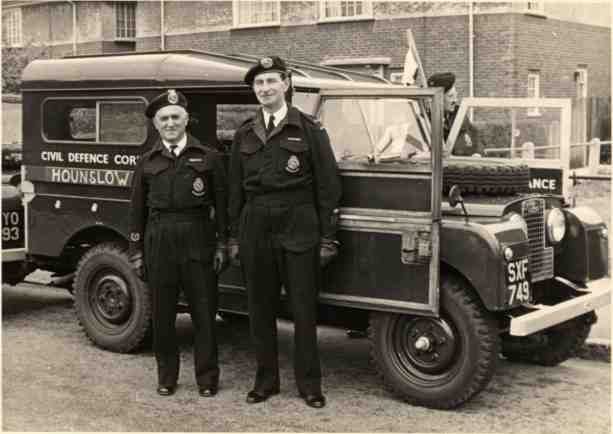 |
|
The crest on SXF 699 |
The door (and close-up of the crest) of SXF 630 |
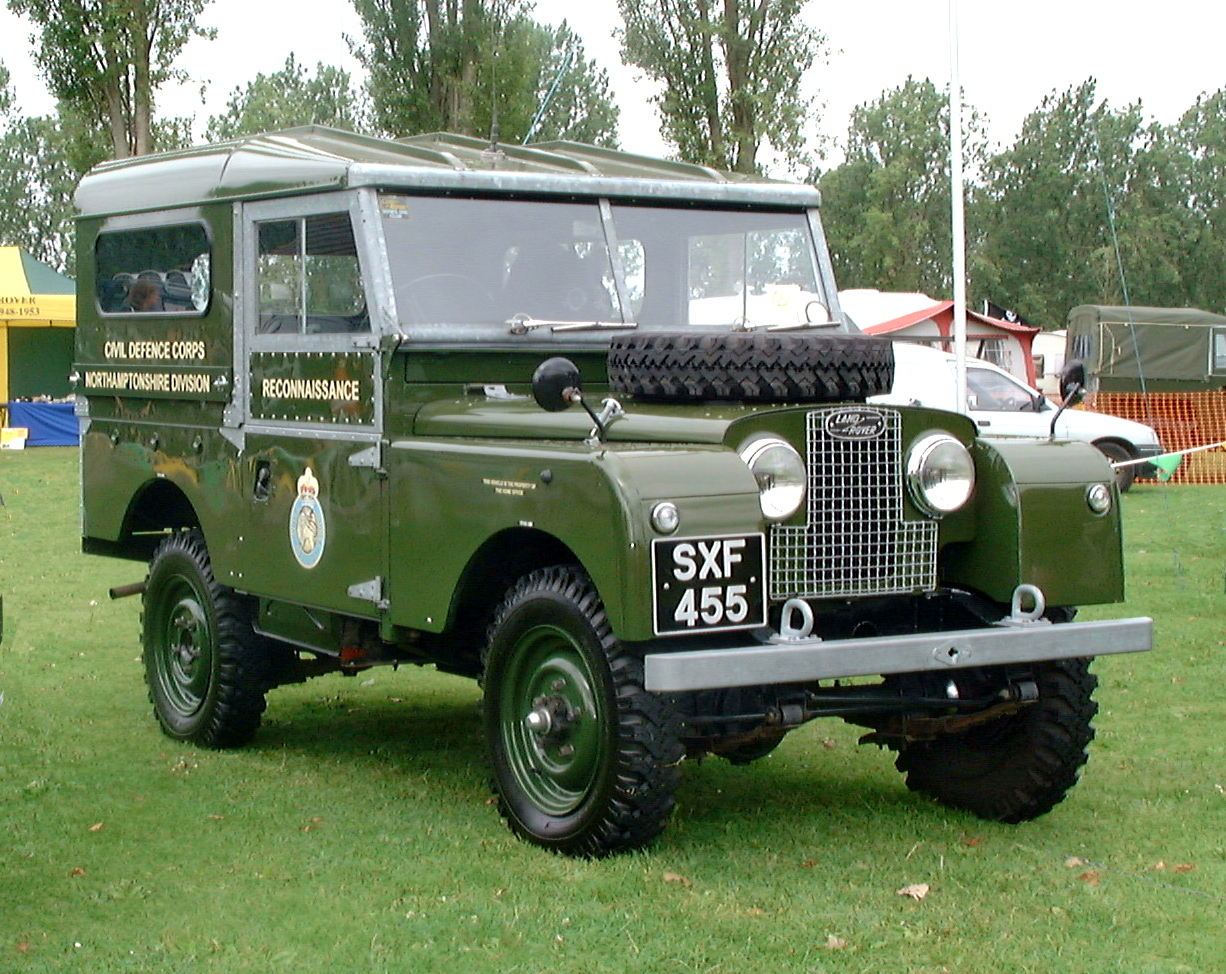
Possibly the best example of recreated CD livery is SXF 455 owned by Russell Hearn. When Oxford Diecast made a model of a Land-Rover in CD livery, it was 455 that they chose as an example. I was able to get a copy of the specification sheet:

I'm not sure about the shade of green specified, or the size of the wheels!!
Russell is a committee member of the Land-Rover Series One Club (LRSOC), and a stalwart on their stand at various events. In 2017 he was at the Peterborough LRO Show, where I took these additional pics:
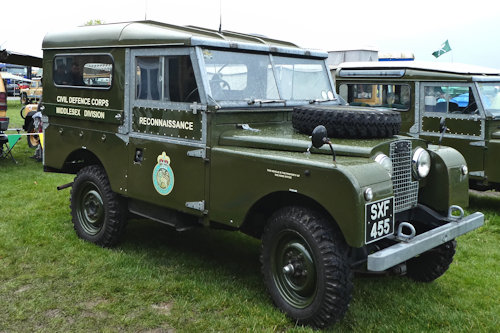 |
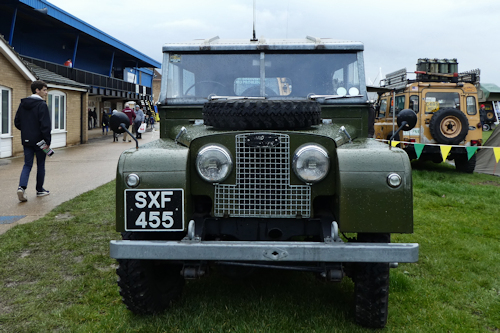 | |
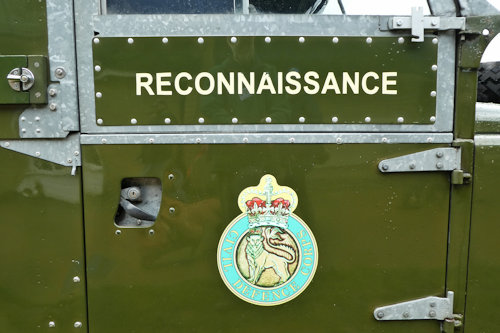 |
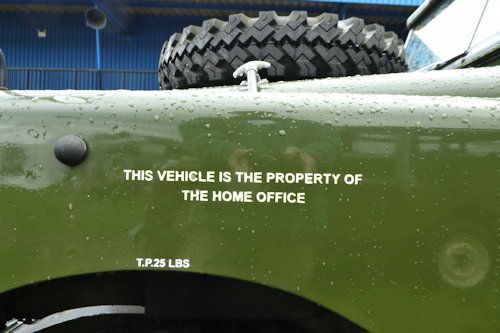 |
As well as the above, I've been asked about what original soft-tops looked like. These pics may help (although they're not all neccessarily original tops).
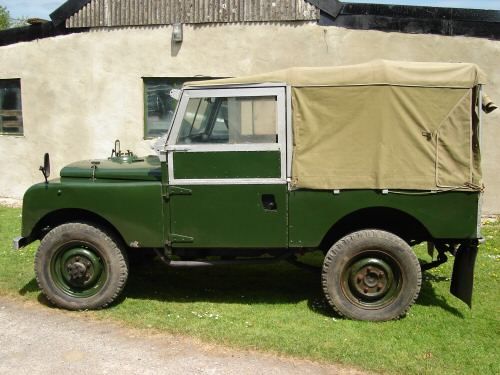 SXF 722 |
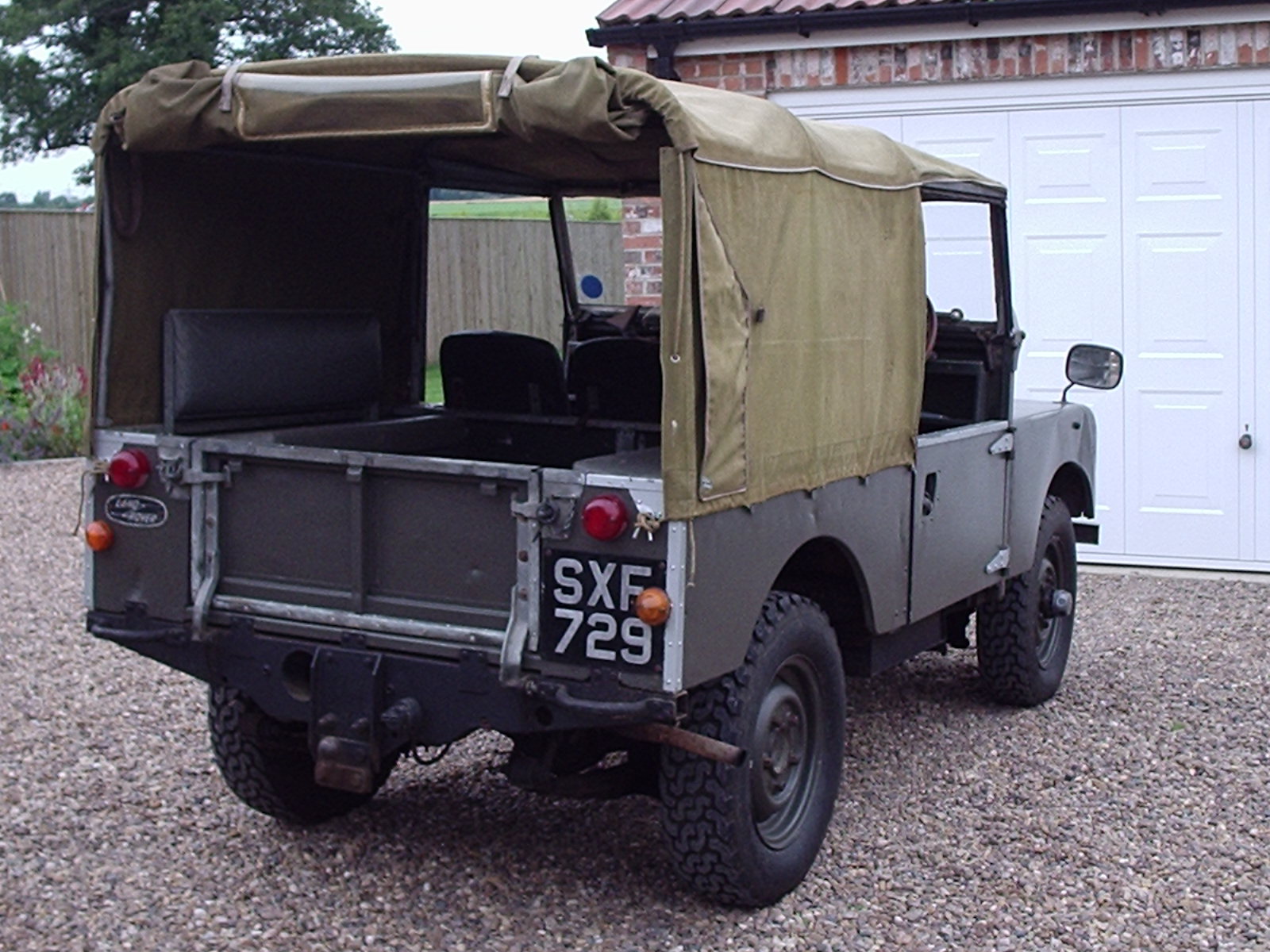 >br> >br>
SXF 729 |
I mentioned above that the presence of holes in the lower body tub can determine whether or not a vehicle was a soft-top in service. On a hard top the station board could be carried higher up above the waistline. These pics show the fixings still in place on SXF 788 (as well as the standard Export Hardtop used by the Home Office). Compare this with the picture of SXF 749 in service above.
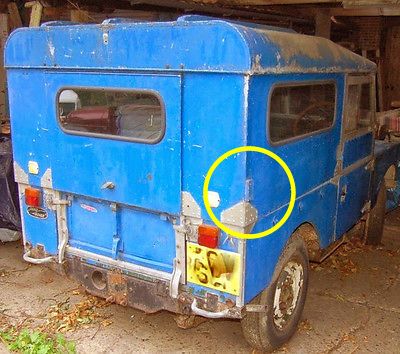 The rear board support |
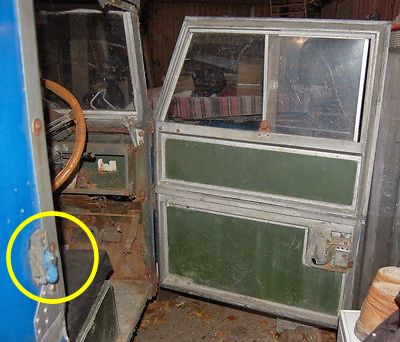 The front turnbuckles |
This close-up of the roof of SXF 788 shows the blanking plate typically fitted after passing into civilian hands, |
|
The hard-tops used on Crown vehicles are quite a complicted subject, and merit quite a bit of explanation — for more details see
www.teeafit.co.uk/sxf/hardtop.htm
Some more examples of the Civil Defence crest:
Research done by an owner and various others on the LRSOC Forum suggest that the font is probably Nauticus Sans Regular, although I have no official corroboration of that.